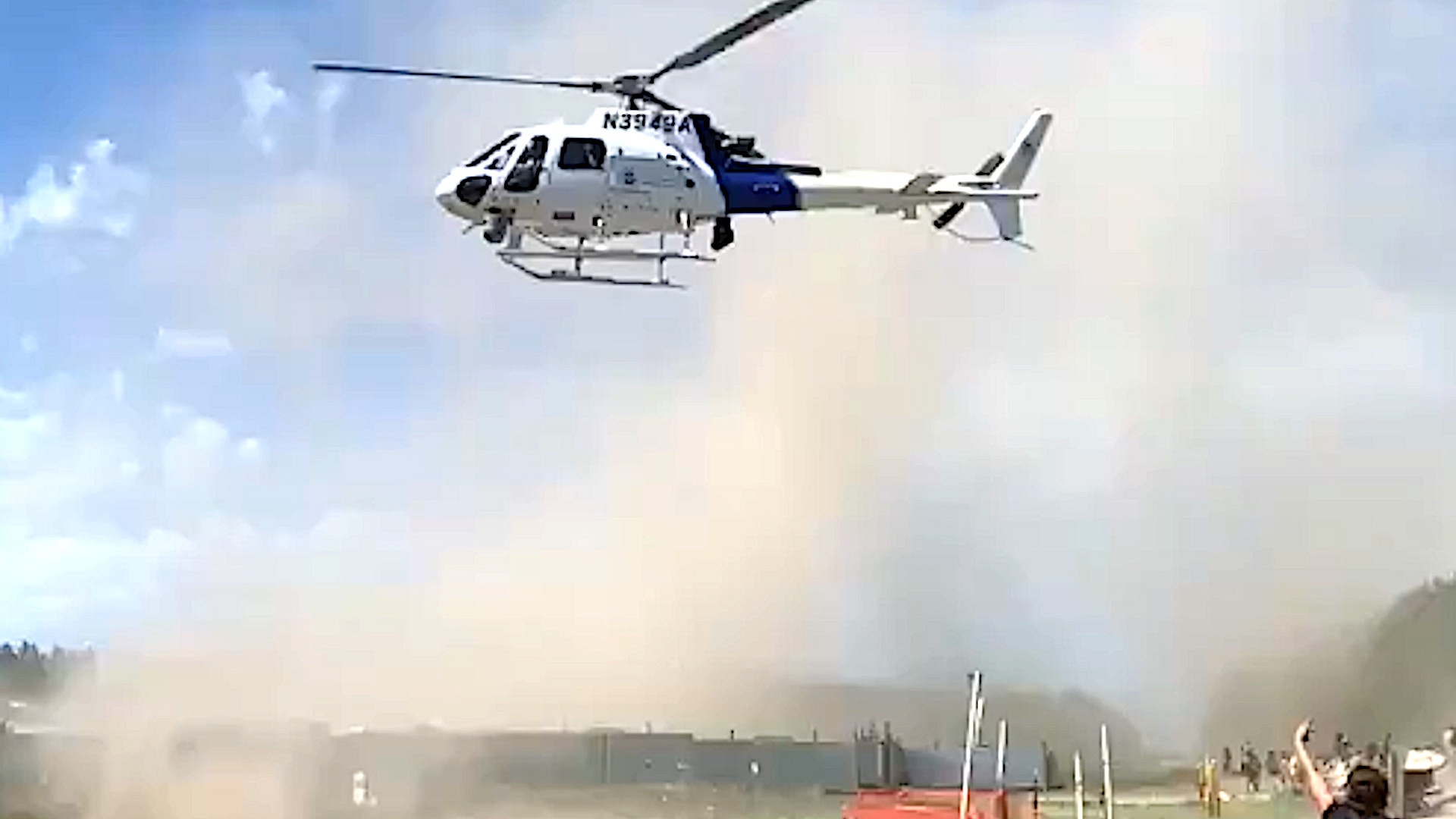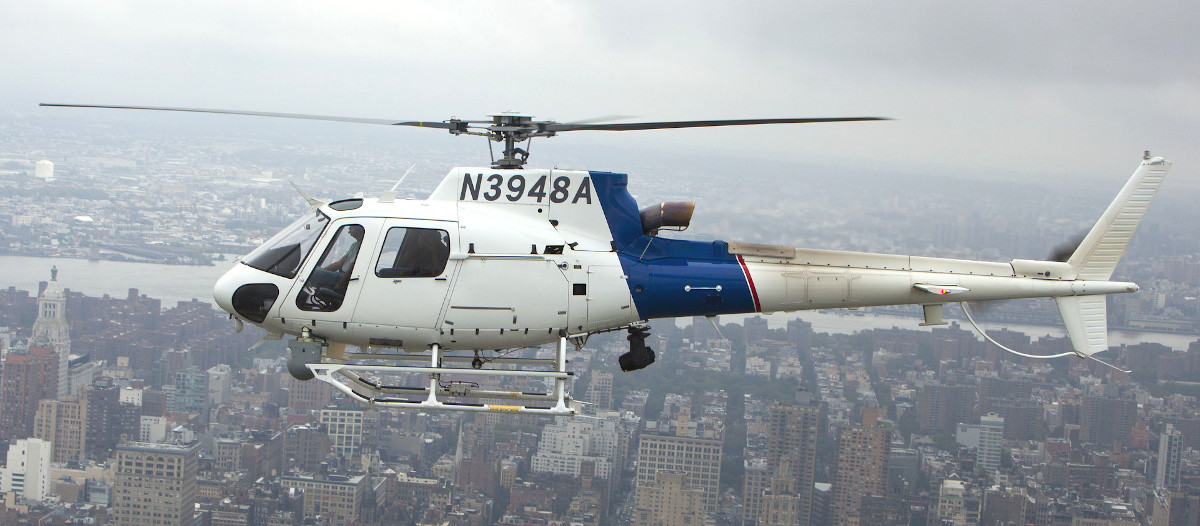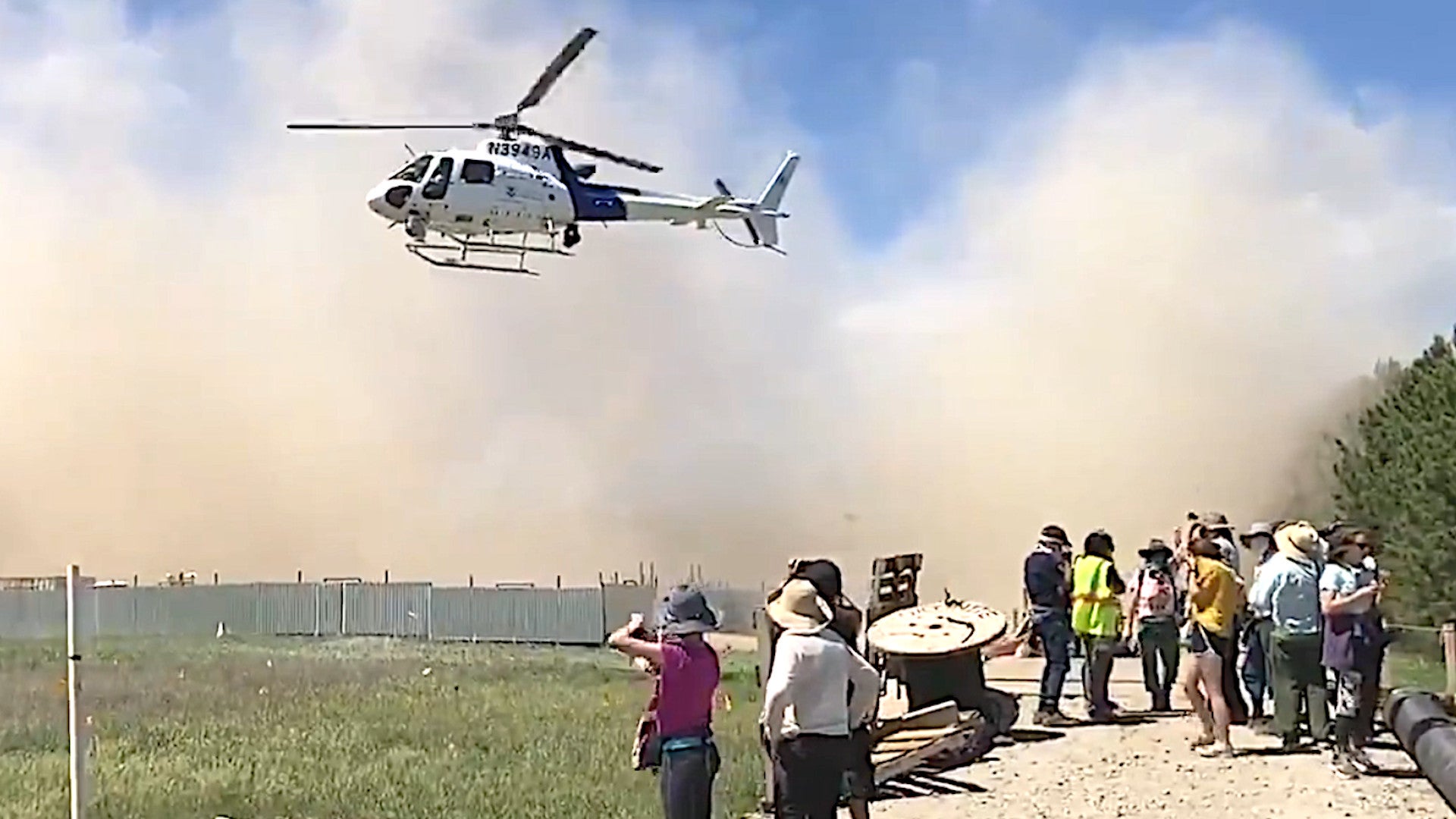U.S. Customs and Border Protection says it is investigating the circumstances surrounding one of its AS350 helicopters flying as low as between 20 and 50 feet during at least three passes over individuals protesting oil pipeline work in northern Minnesota. This maneuver appeared to be an attempt to disperse protesters using the force of the helicopter’s rotor wash, a potentially dangerous and definitely controversial tactic, though local law enforcement agencies have denied this was the aircraft’s mission. As The War Zone
noted in our initial reporting on this incident, the Army National Guard was roundly criticized for employing helicopters in a similar fashion in response to protests in Washington, D.C., just over a year ago.
The incident took place on June 7, 2021, at a pumping station for Canada-headquartered Enbridge Energy’s Line 3 oil pipeline, which passes through Minnesota carrying crude between the Canadian province of Alberta and a terminal in Superior, Wisconsin. Hundreds of protesters, including members of indigenous groups and environmental activities, some of whom refer to themselves as “water protectors,” had descended on the site to try to block work to modernize this section of the pipeline. Their position is that the pipeline presents environmental risks, especially to lands that are significant to local Native American tribes, and 24 people physically chained themselves to construction equipment in an act of civil disobedience.

“U.S. Customs and Border Protection [CBP] in Grand Forks[, Minnesota] responded to a local law enforcement request for assistance to address a gathering of people who were reported to have trespassed on private property,” a spokesperson for the agency told The War Zone. “CBP’s headquarters is investigating the facts to determine precisely what occurred and whether the actions taken were justified. All appropriate actions will be taken based on the facts that are learned, including with respect to the incident itself as well as the agency’s applicable policies and procedures.”
Separately, the Northern Lights Task Force Minnesota, or NLTF MN, a Minnesota law enforcement collective, confirmed issuing the request for air support from CBP, but said that the helicopter had only been called into issue audio message demanding the protesters disperse. “The idea was to provide the order in a manner that everyone would be able to hear,” NLTF MN said in a statement on Facebook.
“Unforeseen to local law enforcement and due to the extremely dry conditions, dust kicked up in the area,” it continued. “As soon as helicopter staff saw what was happening, they immediately left the area to ensure no further issues would be caused. This was not an intentional act to cause discomfort or intended as a dispersal mechanism.”
Witnesses on the ground said that the audio message the helicopter broadcast was inaudible, an assertion which is supported by the video that has since emerged online of the incident.
Regardless of the intent, flying the helicopter so low in this case presented clear potential risks, both to its crew and individuals on the ground. Debris kicked up by the powerful downwash could have injured protesters, or worse, or been sucked up into the helicopter’s engines or otherwise hit the aircraft, especially its rotors. Had the crew of the AS350 suffered an engine failure or otherwise lost control, the aircraft could have gone careening into bystanders below.
It is worth noting that an initial investigation that the Army National Guard conducted determined that the controversial helicopter flights over protesters in Washington, D.C., last year did not present as great a danger because the UH-72 Lakota and UH-60 Black Hawk helicopters employed each had two engines, mitigating some of the risk of a total loss of power. The AS350 is a single-engine type. This, of course, does not address the other dangers flying debris can pose to a helicopter.
That same investigation determined that the use of helicopters in this way, in that case, was not authorized and led to disciplinary action against multiple individuals. A subsequent investigation that the Department of Defense’s Office of the Inspector General carried out, a redacted version of which was released in May, called some of those conclusions into question and further underscored confusion and inconsistencies in the issuing and interpretation of orders at various levels of the chain of command during the episode.

We will be watching closely now for any new announcements about CBP’s investigation into the use of its AS350 helicopter in this incident.
Contact the author: joe@thedrive.com
